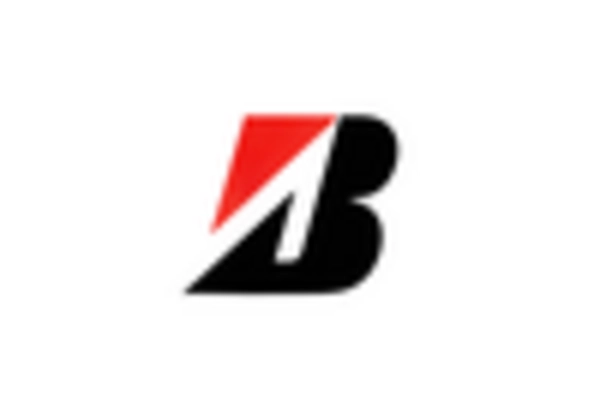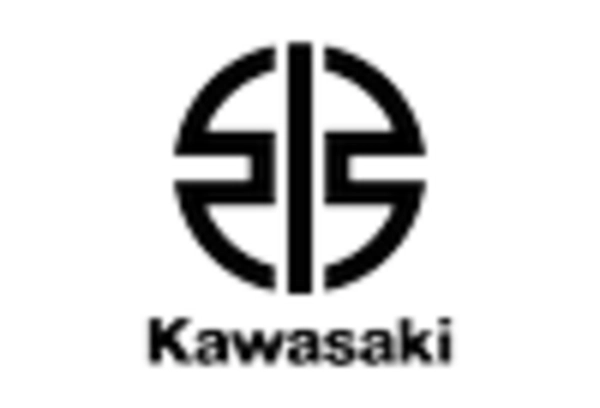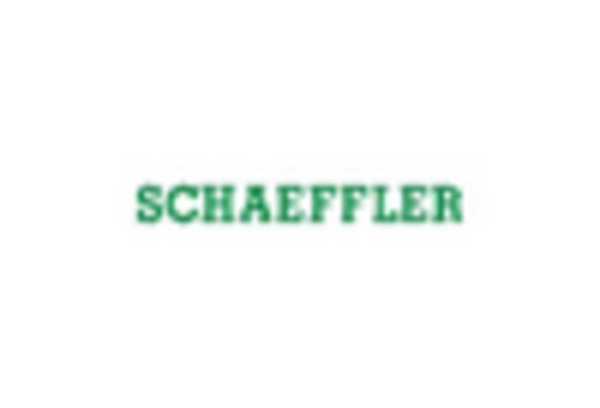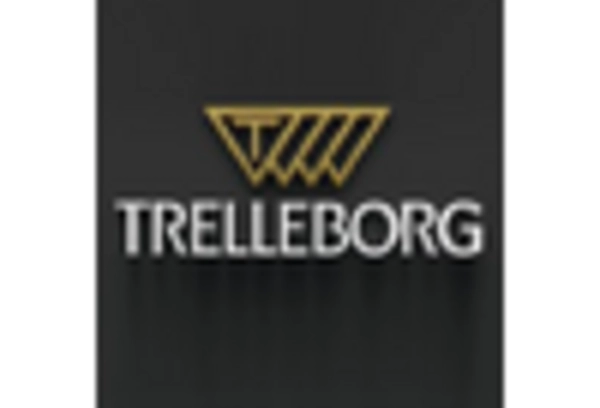Rising Urbanization
The Lead Rubber Bearing Market is poised for growth due to the rapid pace of urbanization. As cities expand and populations increase, the demand for robust infrastructure becomes critical. Lead rubber bearings are essential in ensuring that new constructions can withstand the stresses of urban environments, including traffic loads and environmental factors. The market is likely to benefit from the construction of high-rise buildings and urban transit systems, which require advanced bearing solutions. Analysts suggest that the urbanization trend could lead to a market growth of approximately 5.5% annually, as more projects incorporate lead rubber bearings to enhance structural performance.
Sustainability Trends
The Lead Rubber Bearing Market is increasingly aligned with sustainability trends as the construction sector seeks eco-friendly solutions. The use of lead rubber bearings contributes to the longevity and durability of structures, reducing the need for frequent repairs and replacements. This aligns with the growing emphasis on sustainable building practices and materials. Furthermore, the recycling potential of lead rubber bearings is being recognized, as they can be repurposed at the end of their lifecycle. As sustainability becomes a priority for construction projects, the market is expected to expand, with projections indicating a potential increase in demand by 8% over the next few years.
Infrastructure Investment
The Lead Rubber Bearing Market is experiencing a surge in demand due to increased investments in infrastructure projects. Governments and private entities are allocating substantial budgets for the construction and rehabilitation of bridges, highways, and buildings. This trend is driven by the need for enhanced structural integrity and longevity, which lead rubber bearings provide. In recent years, the market has seen a compound annual growth rate of approximately 5.2%, reflecting the growing recognition of lead rubber bearings as essential components in seismic isolation and vibration control. As urbanization continues to rise, the demand for resilient infrastructure is likely to propel the Lead Rubber Bearing Market further.
Technological Innovations
Technological advancements are playing a pivotal role in shaping the Lead Rubber Bearing Market. Innovations in material science and engineering have led to the development of more efficient and durable lead rubber bearings. These advancements enhance the performance characteristics of bearings, such as their load-bearing capacity and lifespan. The integration of smart technologies, including sensors for real-time monitoring, is also gaining traction. This trend is likely to attract investment and research, further propelling the market. As the construction sector increasingly embraces these innovations, the Lead Rubber Bearing Market could witness a growth rate of around 6% annually, driven by enhanced product offerings.
Seismic Safety Regulations
The Lead Rubber Bearing Market is significantly influenced by stringent seismic safety regulations being implemented across various regions. These regulations mandate the use of advanced materials and technologies to ensure the safety and resilience of structures in earthquake-prone areas. Lead rubber bearings are increasingly recognized for their ability to absorb seismic energy, thereby protecting buildings and infrastructure. As a result, the market is projected to grow as construction firms and engineers seek compliant solutions. The adoption of lead rubber bearings in new projects is expected to rise, potentially increasing market share by 7% over the next five years as safety standards evolve.


















Leave a Comment